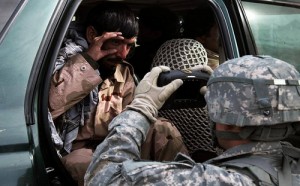Friday Morning: Gypsy Caravan
TIME, you old gipsy man,
Will you not stay,
Put up your caravan
Just for one day?— excerpt, Time, You Old Gipsy Man by Ralph Hodgson
If last week’s Friday chamber jazz was most like me, this genre is next to it. Gypsy jazz is what my grandfather always hoped I’d learn to play; I learned to love Django Reinhardt with Stephane Grapelli at his knee. This stuff makes a bad day move along briskly, makes heavy hearts light. I don’t mind the added filip some smart ass added to the embedded video of Hot Club of Dublin featured here — seems fitting for the tune’s mood.
Unfortunately I have to be away from my desk this morning on a mission of mercy. If I’m stuck someplace with decent WiFi I will try to share a few things I’ve been reading. Otherwise use this as an open thread and tell me what you’ve got planned this weekend — hope it’s something fun!
Oops, last minute adders:
Facebook gets smacked by court for storing biometric content (Reuters) — I really dislike Facebook. Just thought I’d tack that on.
Athabasca tar sands south of Fort McMurray threatened by fire (CBC Calgary) — something-something karma-something
A few more adders:
Aussie company touting anti-Zika virus condoms and gel – what? (Sydney Melbourne Herald) — Are you kidding me? Just use a damned condom. Think about it: plain old condoms are recommended as protection against viral STDs like HIV.
Maps showing borders India doesn’t like may earn jail time and fines (QZ-India) — Wondering why this issue has bubbled up again, not that the border with Pakistan has ever been resolved to India’s satisfaction.
Carnegie Mellon team turn human skin into touch tech (The Verge) — Um, this was done back seven years ago by MIT, called “Sixth Sense,” and released as open source a year later. Still wondering why that tech wasn’t commercialized.

